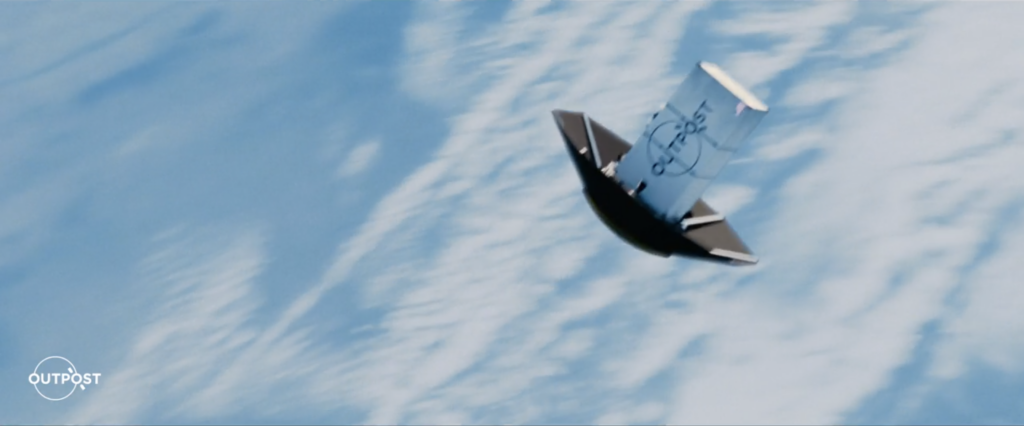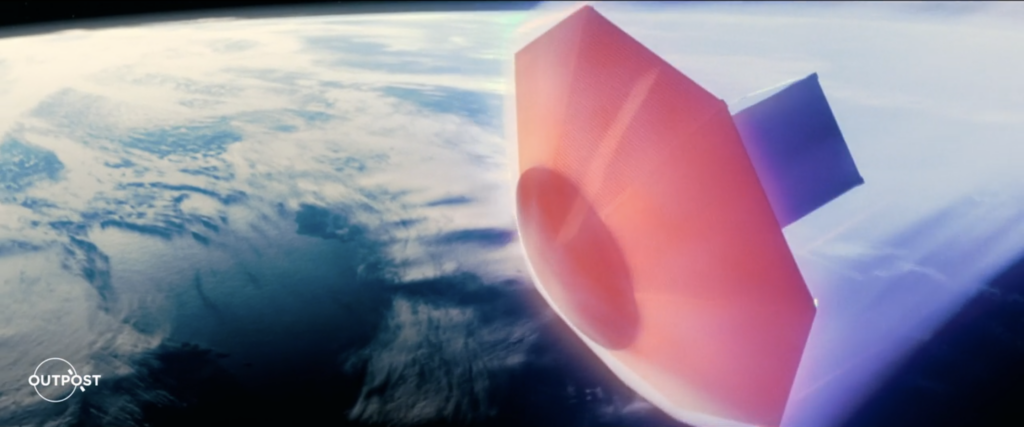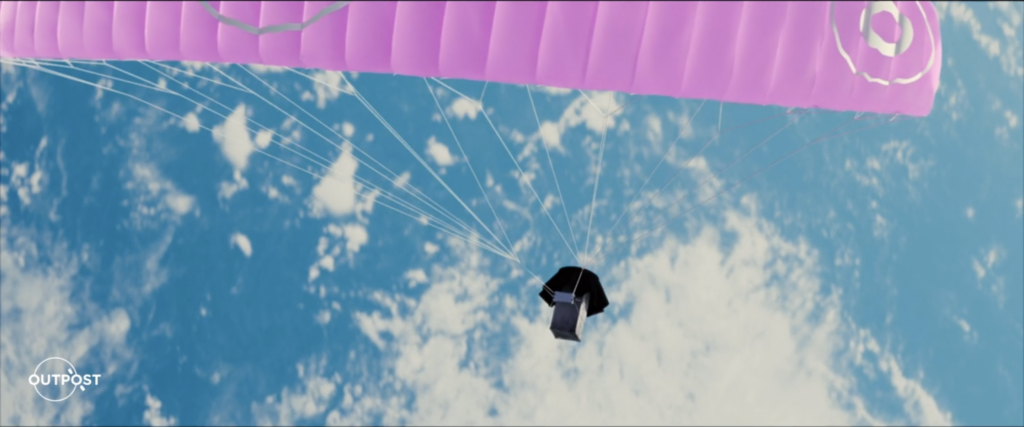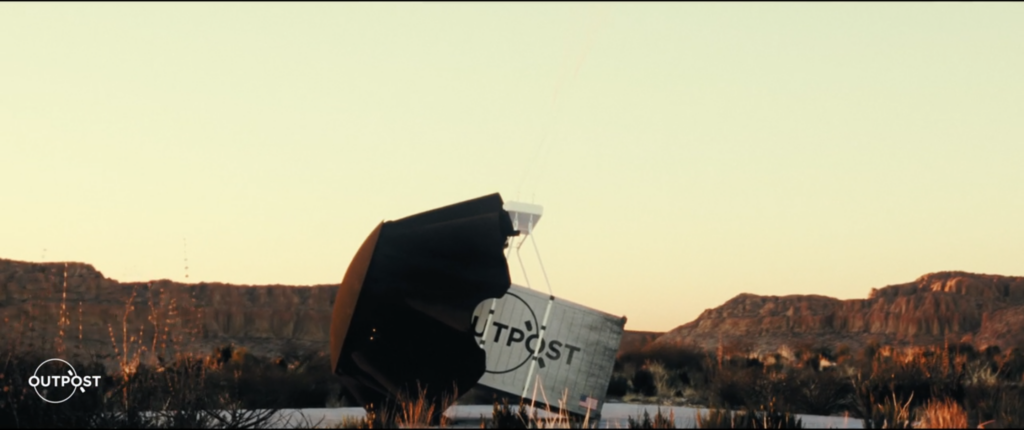The space industry is built on a one-way street.
Decades of innovation have made humanity very good at getting spacecraft and satellites into orbit, but companies are still working on an efficient return route for cargo, which will lead to a long-promised in-space manufacturing industry.
One startup leading the charge is Outpost, which essentially takes a different approach to delivering items from a spin to the home. The Los Angeles-based Earth Recovery company is preparing for the first launch – and return – of Karyal, a spacecraft the size of a shipping container, the company revealed to Payload.
Current style: Since the beginning of human spaceflight, Earth return technology has remained largely unchanged. Space capsules returning from orbit are fitted with removable heat shields to withstand the immense heat of re-entry. They are filled with large stores of propellant to forcibly decelerate through the atmosphere, and they have heavy parachutes or parafoils, which deploy at low altitudes to deliver the capsules home.
As a result, space capsules have limited capacity and difficulty hitting a predetermined target on Earth. Anyone trying to get things back—from scientific experiments to orbital-synthesized pharmaceuticals—to Earth faces extremely high costs, which ultimately limit the number of things that can be built or tested in space and brought back intact.
“The companies that have been successful in doing this, raising money at least, they’ve found use cases of things that can fit in these little capsules that are immensely valuable. So, something that can fit in a test tube or vial worth millions of dollars,” Outpost CEO Jason Dunn told Payload.
But the future of manufacturing in space depends on Earth return companies finding a way to return much larger volumes from space—like, say, shipping containers.

Outpost System: Outpost’s Ferial and Karial spacecraft combine a series of relatively simple technologies to return objects from orbit in a revolutionary way. These components are:
- Satellite Pass: This carries the propulsion system that allows the spacecraft to maneuver in orbit and send itself back to Earth.
- Heat shield: The Outpost heat shield, which uses NASA-developed technology and was flight-tested in 2023, is made from a three-dimensional fused carbon fiber fabric that unfolds in orbit to protect the payload and slow the vehicle.
- a container: The Ferriol can carry a 100kg payload, while the Carrial is the size of a standard shipping container of 20 feet and can host payloads of up to 10 tons.
- A robotic paraglider: Upon entry, a paraglider wing stabilizes the spacecraft with fine accuracy and robotically guides it to its destination.
The Ferial, the smaller model, is designed for the ride architecture of the SpaceX ride, while the Carrial can fit into existing mid-size launch vehicles, such as the Falcon 9 .

How it works: Once in orbit, Carrial emerges from the launch vehicle and deploys its heat shield.
- The propulsion system on board the spacecraft allows it to maneuver like any other satellite. When he is ready to return home, he directs himself towards a re-entry passageway and begins his descent.
- Hence, the heat shield exhibits its unique advantages. Through radiant cooling, the payload protects its back from extreme heat without the need for a back shell. More importantly the large surface area of the heat shield slows the vehicle to subsonic speeds much faster than capsules or body-lifting spacecraft can.
- At about 30 km, Karyal deploys a drogue parachute, which stabilizes the spacecraft and further reduces its speed while the heat shield closes.
- At about 20 km, Karyal releases his parachute and opens his robot-controlled paraglider wing, allowing Outpost to deliver point-to-point delivery, anywhere in the world, with incredible accuracy.
“Returning the earth is not just returning to the earth. It depends on returning to a very specific place on earth. We want the accuracy of the landing pads,” Dunn said.
Over more than a hundred flight tests, the company has honed this accuracy. In one, the experimental craft deployed the paraglider wing from a weather balloon at an altitude of 20 km, and flew over 180 km below and landed on a 5m target.

The next payload: Taken together, these systems allow companies to test things in space in order to return them home, as well as produce large quantities of goods to sell back on Earth.
“Because our entire entry system is fabric, lightweight and low mass, we can devote a large amount of our vehicle to customer payload. A typical capsule returning from space has a payload mass fraction of 5%, maybe 10%. We’re at 50% and beyond,” Dunn said at the Amazon Mars 2023 conference.
Outpost intends to lower production costs in space and open the door to new production use cases that would be cost-prohibitive with other re-entry systems. In addition, the company hopes its technology will reduce the amount of space junk in orbit and boost recycling.
- The company has already signed a $1.7 million contract with the Department of Defense to build a ship spaceship in support of ISAM missions.
- It has also partnered with NASA to develop cargo ferries used to recover items from commercial space stations and the ISS, a company spokesperson told Payload.

What’s next: The first Ferrial mission is planned for early 2026. Initial customers are likely to come from the U.S. military for point-to-point delivery and commercial companies looking to conduct rapid, repeatable tests in orbit. Karial could fly as early as 2027.
#Outpost #plans #shipping #containers #space